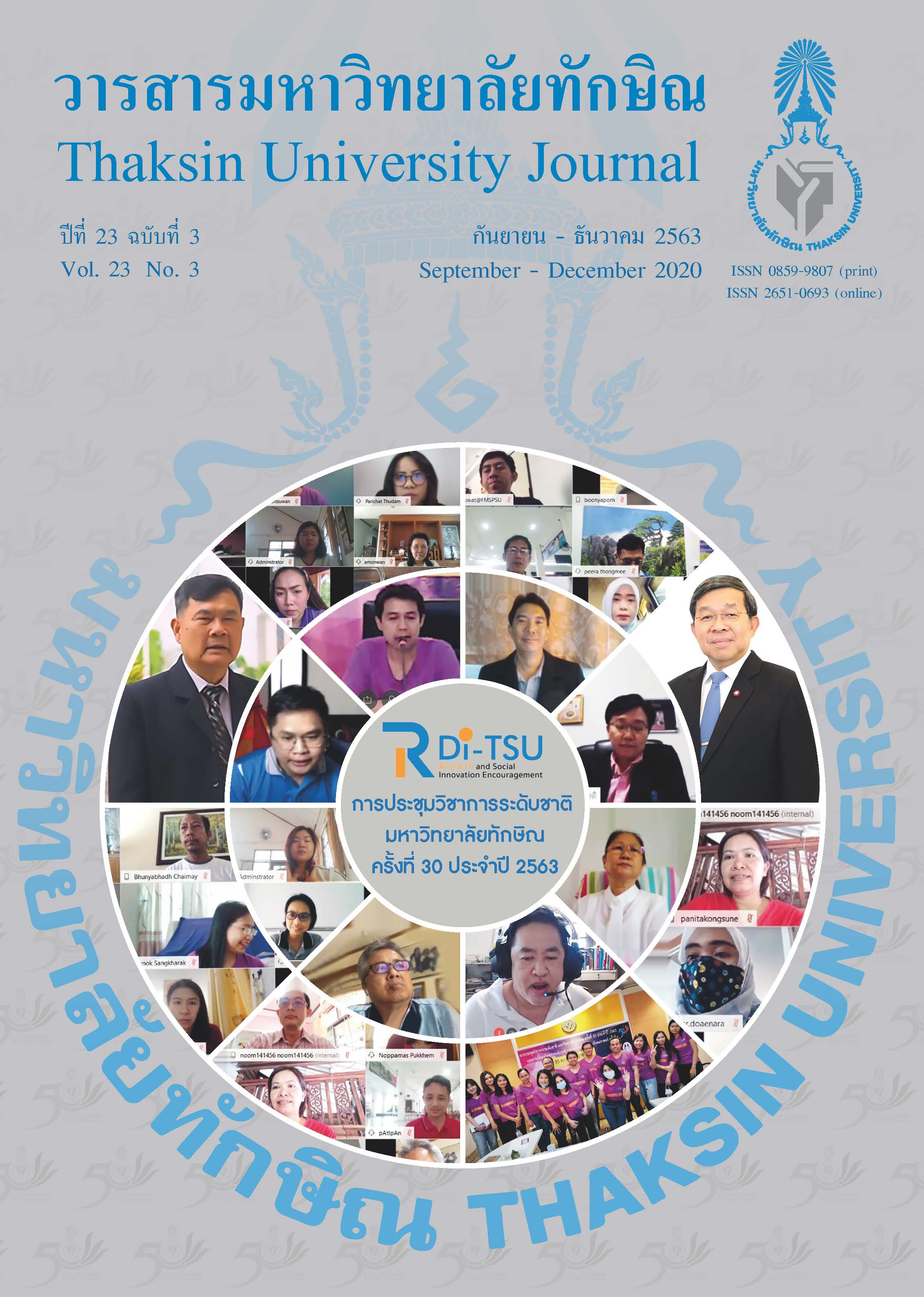Evaluation of Satellite Monthly Rainfall Product PERSIANN-CCS using Rain Gauge Stations over the Upper Ping River Basin
Main Article Content
Abstract
Long-term recording of rainfall is an essential data to calculate runoff and preliminary irrigation structure design during the feasibility study on the irrigation projects. However, the lack of rain gauge stations and their heterogeneous spatial distribution throughout the Upper Ping River Basin caused limitation of appropriate representative rainfall data, especially in a complex mountainous area. Therefore, the satellite-based rainfall products are the alternative sources that could be used as rainfall data in ungauged areas. In this study, 30 rain gauge stations of the Royal Irrigation Department were selected and examined the consistency of rainfall data using Double Mass Curve method. The statistical measures of correlation coefficient (R), mean error (ME) and bias (BIAS) were tested the relationship between monthly rainfall data from PERSIANN-CCS satellite products and rain gauges during the year 2005 – 2015. The result showed a strong correlation between monthly rainfall data from PERSIANN-CCS and rain gauges with R between 0.80 - 0.98. However, ME and BIAS with negative values on every month, especially the dry season, indicate that PERSIANN-CCS underestimates rainfall data. It was found that the average annual rainfall of the rain gauge stations and PERSIANN-CCS data are 1,158.2 and 831.8 millimeters per year, respectively. In addition, the relationship between ME and NASA SRTM-DEM revealed a negative correlation with an R of -0.65 indicating that PERSIANN-CCS tends to give low accurate rainfall data at high elevation.
Article Details

This work is licensed under a Creative Commons Attribution-NonCommercial-NoDerivatives 4.0 International License.
References
Taesombat, W., & Sriwongsitanon, N. (2009). Areal rainfall estimation using spatial interpolation techniques. ScienceAsia, 35(3), 268–275. DOI: 10.2306/scienceasia1513-1874.2009.35.268.
Huffman, G. J., Adler, R. F., Bolvin, D. T., Gu, G., Nelkin, E. J., Bowman, K. P., …Wolff, D. B. (2007). The TRMM multisatellite precipitation analysis (TMPA): Quasi-global, multiyear, combined-sensor precipitation estimates at fine scales. Journal of Hydrometeorology, 8(1), 38–55.
Yasutomi, N., Hamada, A., & Yatagai, A. (2011). Development of a long-term daily gridded temperature dataset and its application to rain/snow discrimination of daily precipitation. Global Environmental Research, 15, 165–172.
Joyce, R. J., Janowiak, J. E., Arkin, P. A., & Xie, P. (2004). CMORPH: a method that produces global precipitation estimates from passive microwave and infrared data at high spatial and temporal resolution. Journal of Hydrometeorology, 5, 487–503.
Hong, Y., Hsu, K.L., Sorooshian, S., & Gao, X.G. (2004). Precipitation estimation from remotely sensed imagery using an artificial neural network cloud classification system. Journal of Applied Meteorology, 43, 1834–1852.
Sun, Q., Miao, C., Duan, Q., Ashouri, H., Sorooshian, S., & Hsu, K. L. (2018). A review of global precipitation data sets: data sources, estimation, and intercomparisons. Reviews of Geophysics, 56(1), 79–107.
Zhang, D., Liu, X. M., Bai, P., & Li, X. H. (2019). Suitability of satellite-based precipitation products for water balance simulations using multiple observations in a humid catchment. Remote Sensing, 11(2), 151. DOI: https://doi.org/10.3390/rs11020151.
Anagnostou, E. N., Maggioni, V., Nikolopoulos, E. I., Meskele, T., Hossain, F., & Papadopoulos, A. (2010). Benchmarking high-resolution global satellite rainfall products to radar and rain-gauge rainfall estimates. IEEE Transactions on Geoscience and Remote Sensing, 48(4), 1667–1683.
Nguyen, P., Ombadi, M., Sorooshian, S., Hsu, K., AghaKouchak, A., Braithwaite, D., Ashouri, H.,... Thorstensen, A. R. (2018). The PERSIANN family of global satellite precipitation data: A review and evaluation of products. Hydrology and Earth System Sciences, 22(11), 5801–5816.
Krakauer, N.Y., Pradhanang, S.M., Lakhankar, T., & Jha, A.K. (2013). Evaluating satellite products for precipitation estimation in mountain regions: a case study for Nepal. Remote Sensing, 5(8), 4107–4123.
Gao, Y. C., & Liu, M. F. (2013). Evaluation of high-resolution satellite precipitation products using rain gauge observations over the Tibetan plateau. Hydrology and Earth System Sciences, 17(2), 837–849.
Li, X., Zhang, Q., & Xu, C. (2014). Assessing the performance of satellite-based precipitation products and its dependence on topography over Poyang Lake basin. Theoretical and Applied Climatology, 115, 713–729.
Romilly, T. G., & Gebremichael, M. (2011). Evaluation of satellite rainfall estimates over Ethiopian river basins. Hydrology and Earth System Sciences, 15(5), 1505–1514.
Qin, F., Xian, T., & Fu, Y. (2018). Cloud-precipitation parameters and radiative forcing of warm precipitating cloud over the tropical Pacific Ocean based on TRMM datasets and radiative transfer model. Atmosphere, 9(6),206. DOI:10.3390/atmos9060206.


